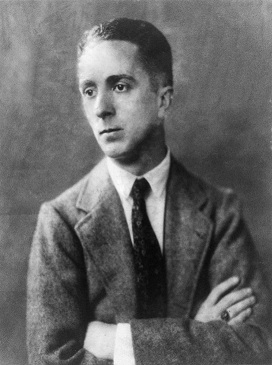Norman Rockwell: The Underside of Innocence
Deborah Solomon’s American Mirror: The Life and Work of Norman Rockwell takes on the touted icon of American normalcy with a bit of a charge—paralleling the illustrator’s rise at the Saturday Evening Post with the unraveling of his marriages (some occasioned by loss) and his close friendships with other men. By the time the artist was invited to dinner with the Eisenhowers, he was deeply engaged in therapy with Erik Erikson. There are lots more anecdotes from Solomon over at the Smithsonian Magazine, including a bit about Andy Warhol’s fascination with and attendance at Rockwell’s first, late-in-life gallery show.
Before there was Solomon’s biography, there was Richard Halpern’s Norman Rockwell: The Underside of Innocence, which argues that that the sense of innocence we locate in Rockwell’s work arises from our reluctance—and also Rockwell’s—to acknowledge its often disturbing dimensions (lust, desire, voyeurism, perversion), even though these acts remain more or less hidden in plain sight. As Halpern notes:
“To lay my cards on the table right away: the kinds of material that Rockwell’s work both exposes and disavows are to no small degree sexual in nature. The claim that forms of sexuality, often perverse, find a place in so wholesome and apparently innocent a figure as Rockwell maybe prove shocking and repellant to some of this more traditionally minded fans. It may be tempting to defend against the idea by chalking it up to the perversity of the interpreter, namely me, or to certain obsessions inherent in Freudian thinking itself. I counsel only patience and an open mind while I make my case. Individual readers may then decide whether, and to what degree, the case is convincing. This is not, in any event, an exercise in orthodox Freudianism, since I often criticize or modify Freud’s thinking. Freud offers nothing more than an initial way into Rockwell—a useful starting point for thought, not its goal. My argument relies not on psychoanalytic dogma bu ton a careful attention lavished upon the images themselves. My reading of Rockwell aims to be, in the end, a Rockwellian rather than a Freudian one. At the same time I feel that Rockwell and Freud are, in certain respects, kindred spirits—unrelenting analysis of the self and culture who often pose similar kinds of questions.”
Halpern’s book is worth a look if you’re interested in exploring this deviously brilliant artist and want to further consider the complexities of his treatment of young boys and women, the displacement of guilt and humiliation found in his portrayal of courtship and marriage, and the “repudiated underbelly” of his happy, painted world.

